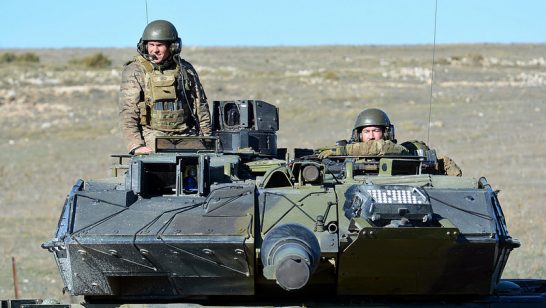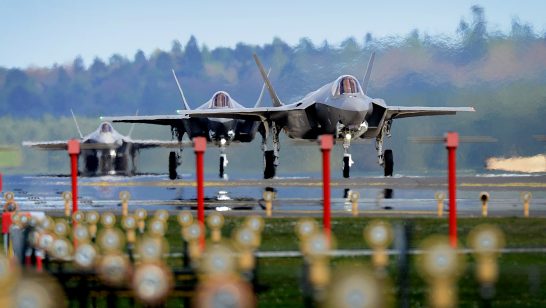
NATO still has a long way to go to ensure it is credible enough to deter its adversaries
Much has been made of NATO’s efforts to increase its credibility in the face of challenges from Russia and the Middle East and to reassure eastern allies that the alliance will come to their defence on the event of war. However, whilst improvements have been made to NATO’s overall deterrence policy, there is much still to do. Without further work, there is a danger NATO’s deterrence policy will turn into a Potemkin village: painted in bright colours and looking impressive at first glance but lacking substance behind the façade.
In order to inform this process the European Leadership Network (ELN) convened a select group of senior alliance officials and experts in Brussels in order to identify the primary points of oversight. Based on this consultation, the ELN has produced an issue brief examining the strengths and weaknesses in NATO’s deterrence posture.
The conclusions can be summarised around five major themes.
Challenge to political unity. Deterrence credibility in the eyes of opponents cannot be divorced from the quality of leadership and perceptions about the Alliance’s political cohesion or lack thereof. Fundamental disagreements about the relevance of common values such as democracy, rule of law, or a sense that some major NATO members, including the US, may prefer purely transactional or selective engagement with other NATO partners, will be noted by opponents as evidence that the Alliance may be easier to divide during a crisis.
There are serious shortfalls in institutional and political knowledge regarding deterrence. The report finds that since the end of the Cold War understanding of deterrence among alliance and member state personnel has atrophied considerably. A combination of the retirement of senior personnel and a focus on expeditionary operations has left the alliance without the institutional understanding of deterrence needed to effectively operate its interlocking aspects. This has serious ramifications, in terms of securing political commitment to deterrence, ensuring coherent strategic communication, and in managing civilian-military relations. This lapse in education also effects the utility of arms control, a critical aspect of security in the Euro-Atlantic now little understood in national security circles.
NATO deterrence still has some serious credibility gaps. Whilst the Wales and Warsaw Summits did much to update NATO deterrence policy in light of new challenges much remains to be done to ensure that NATO deterrence is fully credible. The ability of NATO to reinforce its eastern members in the event of conflict remains untested and will rely on significant investment in infrastructure. Much remains to be defined about NATO’s response to cyber-attacks against its members. Alliance nuclear posture has remained largely unchanged, including an unclear linkage between nuclear and conventional aspects of deterrence. Finally, the collective deterioration of alliance and member state expertise on Russia has led to a corresponding lack of understanding on sending and understanding strategic signalling to/from Moscow.
The Russian challenge is not being met effectively. The specific challenges posed by the Russian Federation in 2017 require a reappraisal of all NATO deterrence aspects. In particular the report argues that NATO must re-accept managed escalation as a tool of credible deterrence, whilst accepting and clearly communicating that restraint is not a weakness. These policies must be combined with a commitment to transparency and confident strategic communication, and to maintaining a disciplined dialogue with Moscow.
NATO’s current deterrence policy contains inherent risks. Asymmetries remain in NATO and Russian understandings of deterrence and escalation, including the use, through detonation or otherwise, of nuclear weapons. Failure to understand these differences is dangerous, leading to misinterpretation and unwanted escalation, possibly to the point of conflict. This risk is further heightened by the continued possibility of unintended escalation following an accident involving the armed forces of the two sides. Finally, there remain substantial spoilers in the NATO-Russia relationship. These include technological drivers of instability such as offensive cyber capabilities, ballistic missile defence and cruise missiles, the application of which in terms of deterrence remains contested.
NATO’s modern deterrence is not yet fully formed either in conception or in implementation. It faces challenges, diverse risks and apparent serious instabilities that deserve to be more squarely addressed.
It is in NATO’s interest to move from the present highly unstable relations with Russia (with the possibility of unwanted and uncontrolled escalation from a minor incident to a major conflict) towards a stable and sustainable mutual deterrence relationship, in which there will be less incentive for either side to engage in risky behaviour and less risk of vicious spirals of confrontation.
The opinions articulated above represent the views of the author(s), and do not necessarily reflect the position of the European Leadership Network or any of its members. The ELN’s aim is to encourage debates that will help develop Europe’s capacity to address the pressing foreign, defence, and security challenges of our time.




